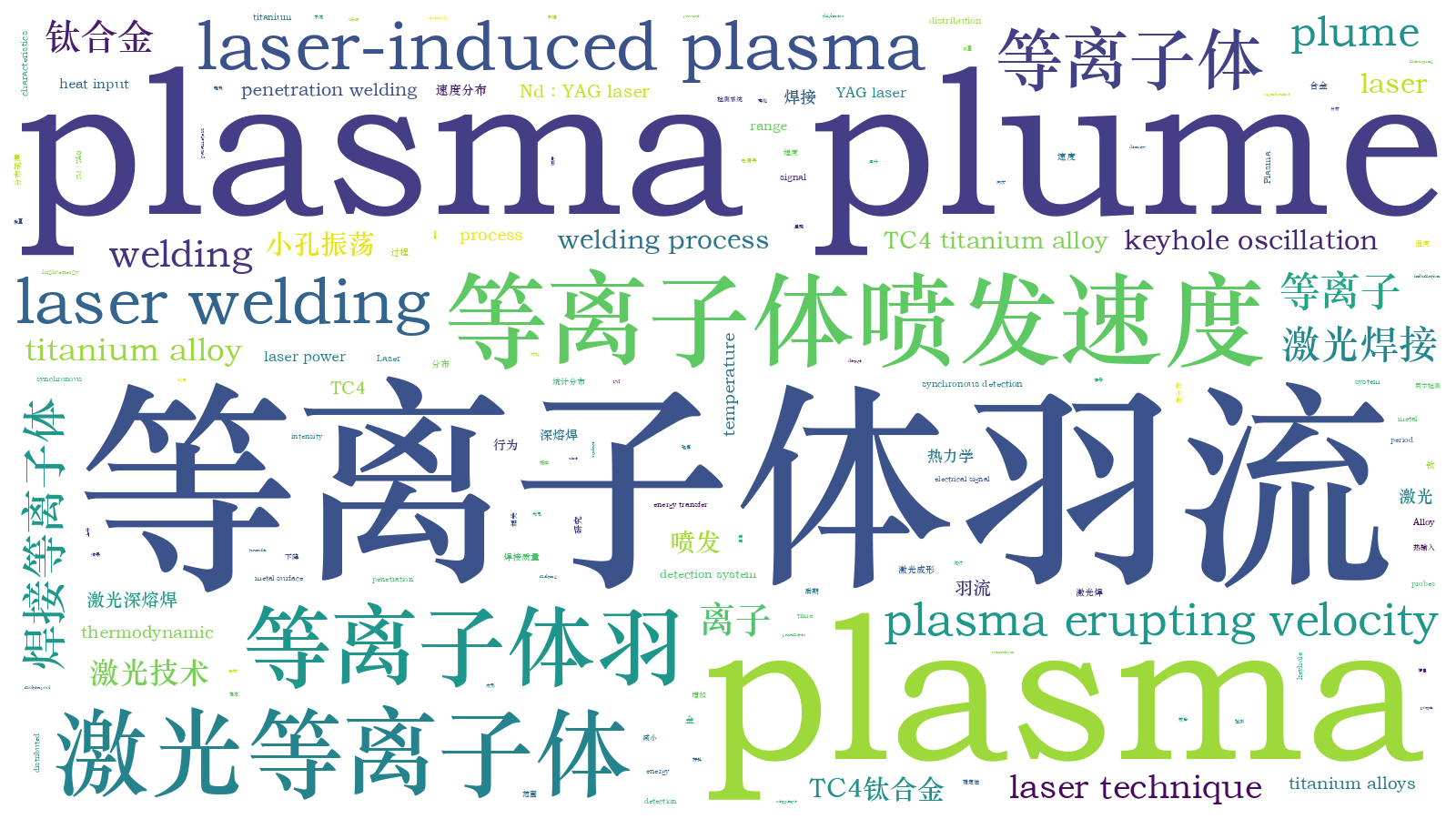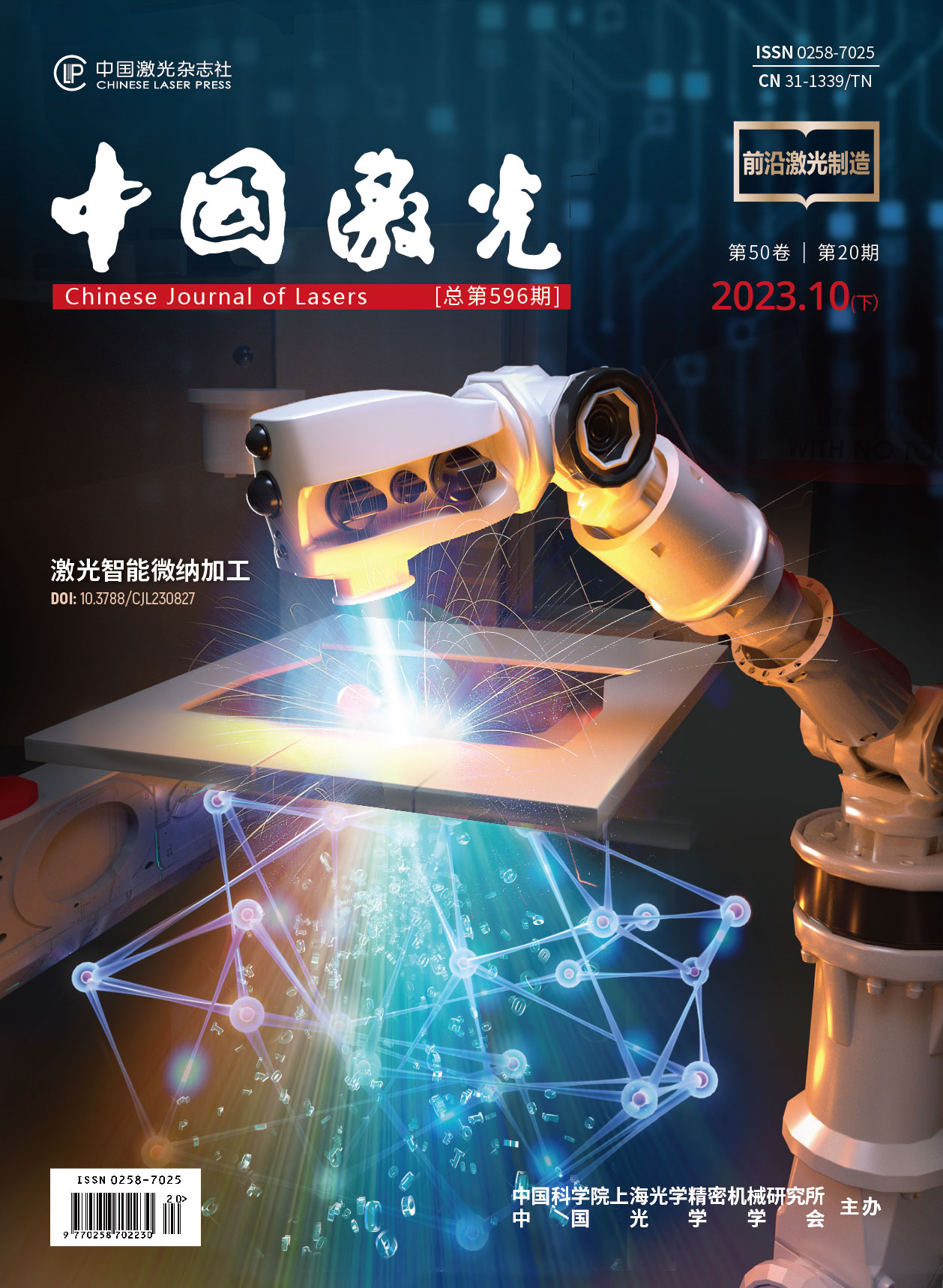TC4钛合金激光深熔焊等离子体羽流热力学行为研究  下载: 736次
下载: 736次
In the laser deep-penetration welding process, a high-energy-density laser produces intense melting and evaporation on the metal surface, generating a keyhole inside the molten pool. The keyhole gives rise to a plasma plume, composed of metallic vapor and plasma, induced by the evaporation and ionization of the molten metal. Previous studies generally believed that the plasma plume eruption process is periodic; however, elements of randomness are also present, specifically reflected in the random plasma eruption period and the difference in plasma plume eruption intensity. However, systematic research on the thermodynamic behavior of plasma plumes is still lacking. Therefore, it is of great significance to further study mass and energy transfer in laser welding by measuring the basic thermodynamic data of the plasma plume and analyzing its distribution.
In this study, a TC4 titanium alloy was used to study the thermodynamic behavior of a plasma plume in laser deep-penetration welding. A titanium alloy plate with a thickness of 3 mm was welded using an Nd∶YAG laser. During the welding process, a plasma photoelectric signal synchronous detection system with a passive dual-probe device was used to obtain the photoelectric information of the plasma plumes under different welding heat inputs. The thermodynamic parameters, including the eruption velocity and temperature of the plasma plume, were measured to study the thermodynamic behavioral characteristics of the plasma plume.
The plasma plume expanded and contracted frequently during laser welding. In this study, the plasma eruption velocity and spatiotemporal distribution characteristics of the plasma plume temperature were studied by analyzing the characteristics of electrical signals in the plasma eruption process. Under the welding heat inputs of 75 J/mm, 50 J/mm, and 37.5 J/mm, the maximum probability plasma erupting velocity was 13 m/s, 14 m/s, and 15.5 m/s, respectively (Fig. 6). In the eruption process, the decrease degree of the plasma plume temperature (k) was primarily distributed in the range of above 0.5 (Fig. 9). The time interval for the two probes to sense the same plasma temperature exceeded twice the time it took for the plasma plume to make contact with both probes. Moreover, the maximum probability value of k decreased with an increase in welding heat input. In the late eruption period, the sequence of the two electrical signals that began to rise was closely related to the plasma eruption intensity (Fig. 10).
In this study, laser welding experiments on titanium alloys were conducted using a plasma photoelectric signal synchronous detection system, and the thermodynamic behavior of the plasma plume during laser welding was analyzed. Under the experimental parameter of 1500 W laser power and a welding heat input range of 37.5?75 J/mm, the main findings of this study are as follows.
1) The plasma eruption velocity was mainly distributed in the range of 6?70 m/s. With an increase in the welding heat input, the maximum probability of the plasma eruption velocity tended to decrease, and there was no evident change in the distribution range.
2) The temperature of the plasma plume decreased with an increase in the plasma plume size, and the decrease in the plasma plume temperature tended to decrease with an increase in the welding heat input.
3) In the later stages of the plasma eruption process, when the electrical signal of the lower probe began to rise earlier than that of the upper probe, the plasma plume eruption was stronger; otherwise, the plasma eruption was weaker.
贾晨鹏, 黄一鸣, 赵圣斌, 袁炯, 张枫, 杨立军. TC4钛合金激光深熔焊等离子体羽流热力学行为研究[J]. 中国激光, 2023, 50(20): 2002105. Chenpeng Jia, Yiming Huang, Shengbin Zhao, Jiong Yuan, Feng Zhang, Lijun Yang. Plasma Plume Thermodynamic Behavior During Laser Deep-Penetration Welding of TC4 Titanium Alloy[J]. Chinese Journal of Lasers, 2023, 50(20): 2002105.







